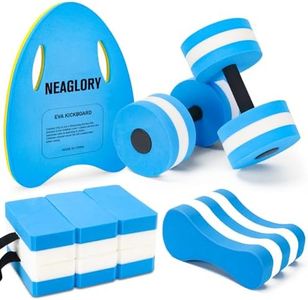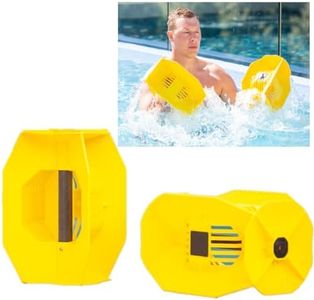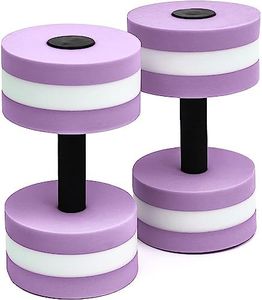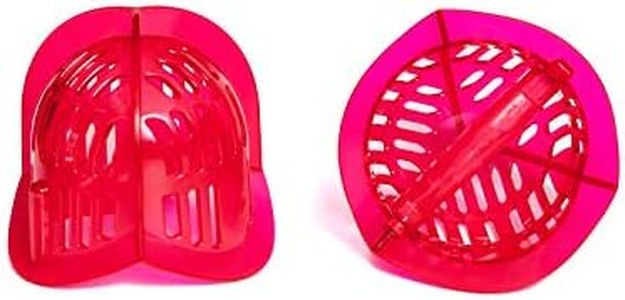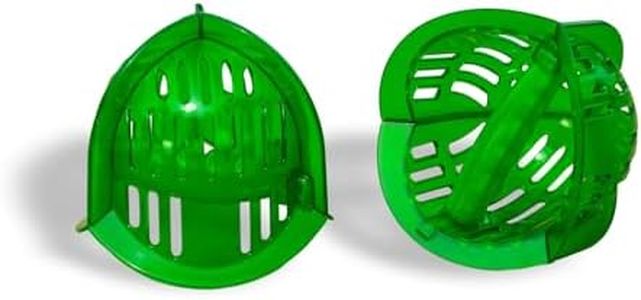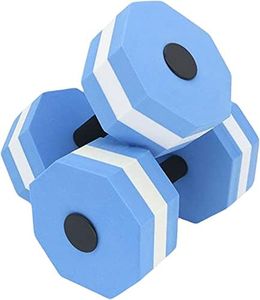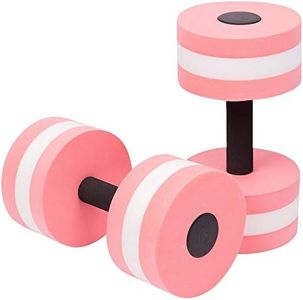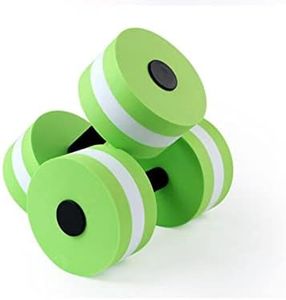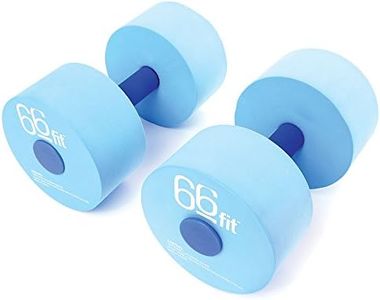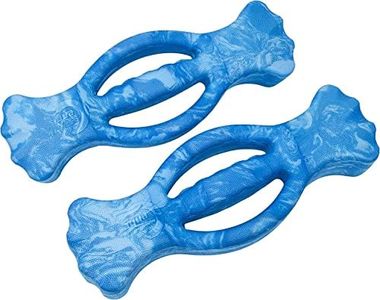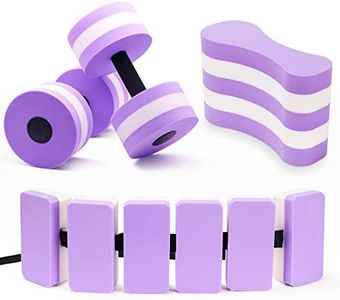We Use CookiesWe use cookies to enhance the security, performance,
functionality and for analytical and promotional activities. By continuing to browse this site you
are agreeing to our privacy policy
10 Best Aquatic Dumbbells
From leading brands and best sellers available on the web.Buying Guide for the Best Aquatic Dumbbells
Aquatic dumbbells are a popular tool used in water aerobics, physical therapy, and aquatic fitness routines. Unlike traditional weights, these dumbbells provide resistance through the water, making your workout both challenging and low-impact on the joints. When selecting the best aquatic dumbbells for your needs, it’s important to consider several key features that affect how effective and comfortable your workout will be. Focusing on the right specs will ensure you select a pair that's not only suitable for your fitness level, but also matches your exercise goals, comfort, and intended use.MaterialThe material of aquatic dumbbells is crucial because it impacts durability, buoyancy, and comfort. Most aquatic dumbbells are made from EVA (ethylene vinyl acetate) foam or other closed-cell foams, which are lightweight, water-resistant, and gentle on the skin. The quality of the material also determines how well the dumbbell will float and how long it will last without breaking down or absorbing water. When choosing a pair, look for high-quality, dense foam that feels sturdy, doesn't deform easily when squeezed, and is comfortable to hold even when wet.
Buoyancy/ResistanceBuoyancy, often labeled as resistance, determines how much effort you’ll need to use the dumbbell effectively in the water. Higher buoyancy means greater resistance, which makes exercises more challenging. Aquatic dumbbells generally come in low, medium, and high resistance levels. For beginners, low resistance is suitable as it allows for easier movements and helps you master the form. Intermediate users can opt for medium resistance for more intense workouts. Advanced users or those seeking strength training benefits should consider higher resistance. Think about your fitness level, goals, and any mobility or rehabilitation needs when deciding on the right resistance.
Handle DesignThe handle design affects comfort and grip during your workout. Some handles are contoured or have textured surfaces to prevent slipping, especially important when your hands are wet. Diameter and length should be comfortable for your hand size—too thick, and it might be hard to grip; too thin, and it might not feel secure. Some handles are padded for extra comfort, which can be beneficial during longer sessions. If you have smaller or larger hands, test or look for user feedback to ensure the handle will suit you.
Size and Shape of the FloatThe size and shape of the float (the foam parts at the ends) contribute to the dumbbell’s resistance and usability. Larger floats create more drag, offering more resistance, while smaller ones are easier to move. Shapes may be round, flat, or even uniquely designed for specific movements. Round floats are the most common and versatile, while flat or specialty shapes may target specific muscle groups or exercises. Choose the size and shape based on your strength, the range of motion required in your workouts, and any particular exercises you want to focus on.
Weight (Out of Water)The actual weight of aquatic dumbbells outside of water is typically very light, but they become effective in the water due to resistance rather than mass. However, slightly heavier dumbbells can make carrying and storing them easier and may provide a bit more resistance during exercises that begin out of the pool (entrance/exit, setup). For most people, the in-water resistance is far more important, but if you have strength limitations or need lighter gear for travel and storage, consider this factor.
Intended UseConsider your fitness objectives—rehabilitation, general fitness, cardiovascular health, or strength training. If you’re recovering from injury or just starting out, opt for dumbbells with lower resistance, smaller size, and ergonomic handles for gentle workouts. For general fitness, medium-sized, medium-resistance models are ideal. If you are focused on strength training or want to challenge yourself, opt for models with larger floats and higher resistance ratings. Always align your choice with your individual needs, comfort, and fitness goals.


